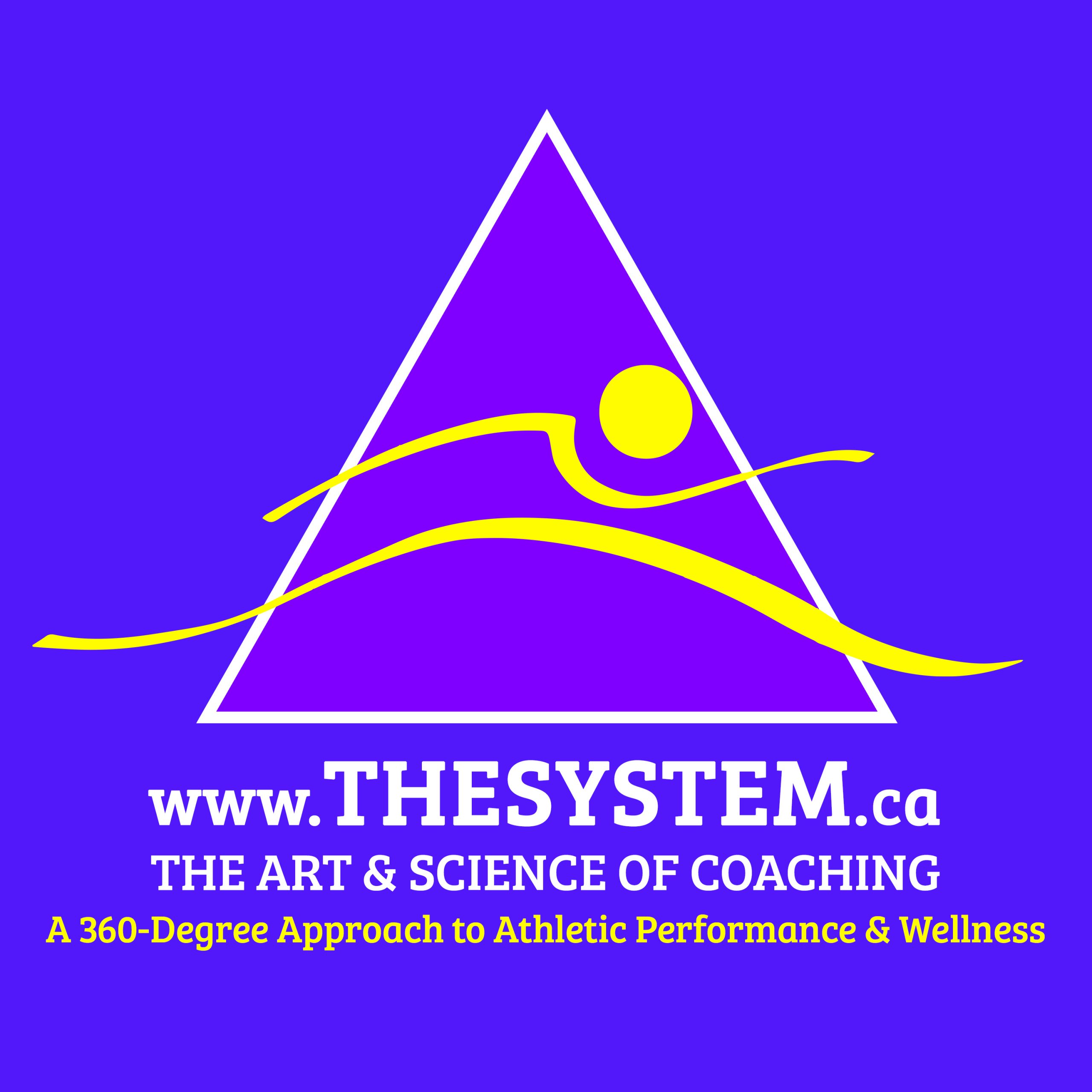The job of the CNS is to protect the body from conscious and subconscious perceived threats to the – spinal cord, visceral organs, the brain, from pain, from soft tissue and ligamentous / tendonous damage.7
Similarly, if you condition using the “wrong” exercise, your CNS will ‘shut down’ and decrease its rate of firing and lengthen its regeneration in order to protect itself from further insult to the items mentioned in the above statement. When it ‘shuts down’, it will allow for the movement to continue, but will begin to recruit abnormal muscle chain firing (a decrease in the stored elastic energy output / coiling, thus requiring more metabolic muscular structures to be engaged …. more effort) , as a consequence, this can lead to inefficiency of movement, a loss in performance and not to mention the potential of acute and/or chronic injury.
“You can teach your CNS to put the ‘brakes on’ (i.e. tense up) and fire slowly or you can teach it to relax and fire fast. The choice is yours”
Let us first assume that we are dealing with an athlete whose bio-mechanical limit is below his/her physiological limit. Now, If this athlete decides to take his/her body past their bio-mechanical limit, this will be perceived by the CNS as a threat to the structural stability of the items mentioned in the earlier statement; hence it will proceed to ‘lockup’ certain areas of the body in order to protect these structures and to prevent further pain and potential soft tissue damage.
“CNS prefers survival over Performance and Efficiency over Wasting energy & pain”
Scar tissue from previous injuries, whether they be from overt tissue deformation or from more subtle fascial distortion, can similarly negatively impact the CNS, and thus ‘shut down’ any ability of the athlete to generate optimal performance. The scar tissue acts as a focal point of abhorrent energy transfer and abnormal sensory information, thus giving the postural system abnormal cues to firing the wrong chain of muscles and send and receive improper kinestic, chemoreceptive and barorecptive information amongst other types of sensory information. The location of the scar tissue(s) on the body can be critical to again further distort this situation. For example, your typical ‘garden variety’ ankle sprain can affect numerous chains in the body, potentially setting up the athlete for further injury very distant to the site of the original insult, not to mention, the potential of re-injury to the initial site itself! We have seen athletes come in with injuries that occurred several years prior, that were “Rehabbed”, only to surface as the hidden source of sub optimal CNS firing!
“The less soft tissue restrictions, the greater ease of movement, the less CNS threat, the greater the CNS firing”
The CNS is constantly governing the performance you are partaking in, making sure it is not threatening the Body. In an average person, this takes up to 90% of the CNS to detect this. In elite Athlete populations, this ranges from < 60% to as low as 40%. This allows the athlete to push beyond his/her mechanical limits.
If you strengthen the ‘right’ muscles with the ‘right exercise’ (i.e. the correct balance between phasic and tonic muscles for each individual), you will place less threat on the CNS. Thus allowing for ease of movement and decreased injury potential. If, however, you choose to condition the body how 95% of coaches and athletes train themselves, you will encounter either immediate short term issues or literally set an athlete up for an injury!
“A majority of self-sustained soft-tissue injuries, with the exception of blunt trauma, are the consequence of improper exercise selection & previous soft-tissue distortion, just to mention a few”
Most coaches / athletes base their exercise selection criteria on what the sport requires of the athlete, as opposed to choosing the right exercise for the athlete (i.e. CNS enhancement). Both perspectives are true but the latter trumps the former a majority of the time. It is only with the elite few that the inverse is true.8
“Choose the Right exercise for the Right job, in the state you find the athlete in & ‘ NOT ‘ what the sport dictates”
The problem, we at The System, encounter over and over again, is the implementation of conditioning methods based purely upon metabolic expenditure and / or , the worst in our opinion, “Sport-Specific” conditioning, which eludes to our previous point. The approach will only bring about an increase in potential injury by way of several factors (just to mention a few)
- increase muscle stiffness,
- increase muscle chain(s) weakness,
- decrease limb mobility, but mainly
- a drop in CNS firing.
You may argue, “Oh, but my athlete is winning”, to this we say …”To what expense” or “Big fish in small pond” or “An accident waiting to happen” or “Could your performance be even better?” Our approach is somewhat esoteric for most coaches and athletes to understand, that’s fine, we are not here to discuss and be bogged down with training semantics, but rather we are focused on identifying and rectifying the “blockages” that are impeding your performance. This means entertaining tried and trued possibilities that are going to achieve results, and not what is considered colloquial conditioning methods.
“Sometimes you need to go back to go forward”
One of the main areas of CNS input, are the joints themselves. Each joint is encapsulated with a ‘rubber boot – like’ casing that fascially penetrates the joint three-dimensionally. Next, there is additional support provided by the ligamentous apparatus, which adds to the joint integrity. The muscles merely are used to help maintain joint centeredness as they respond to the displacement felt at the level of the joint capsule and ligaments. Your body wants to maintain 3-D joint centeredness before the execution of limb movement. By initiating this step, your body protects the joints from trauma. If by chance the external load is too great, i.e. the joint(s) displacement is too great, the surrounding joint musculature can not support the joint, this will be perceived as a threat to the CNS, and it will ‘shut-down’ any further movement by that limb(s) in order to protect the joint(s). An example of this would be performing a lift with a load beyond your 1RM.
“Anchor then move. You can’t fire a cannon from a canoe, unless you have pontoons on the canoe”
Therefore, if you want more strength, first you can not have any pain; second your ligaments can not be over extended. The consequence of this will result in a definite altered muscle firing pattern(s), altered length-tension relationships between antagonist / agonist / synergist muscles, altered inter-limb co-ordination, decreased performance and ultimately possible injury.
“Ease of Movement relates to greater timed relaxation & contraction between intra and inter- muscle groups, which leads to greater force production with less conscious awareness…”When you seek it, you can not find it….movement just happens …Effortless Effort”
Most therapists resort to Soft Tissue methods to obtain increased ROM in limbs, having said this, we are not here to discourage this practice nor are we here to say it is ALL about Decreased CNS firing, however, we are saying that if their is local scar tissue in the muscle belly, it definitely has to be worked out. But the other question we propose is…”How did the scar form in the first place?”. You might answer “from a previous injury to that area.” The rebuttal to this is …”How did they obtain the injury?”. Even if the scar was obtained from Blunt trauma or from a self-sustained injury, in either case the CNS still has its foot in the door. If it were due to the latter case, the question again would be “Why?”, which again takes us back to the CNS.6
“ROM is, more often than not, limited by a threat(s) to the CNS & not necessarily by muscle belly length”
If the CNS becomes less ‘mindful’ about efficient movement patterning, due to habituated abhorrent motor patterning, by way of poor learned technical skill; it continues to use that movement pattern, until you give it the right movement. In this case, the CNS will ‘re-set’ itself to the correct movement because it is more efficient and perhaps causes less pain, discomfort, muscle weakness, joint instability, and muscle joint / tightness to the body.
“Practice makes…..Permanent not Perfect, so be careful what & how you practice”
Lets for a minute talk about stretching. The Current ‘wisdom’ we’ve seen by coaches and athlete’s alike, is the idea of “DYNAMIC FLEXIBILITY.” Let’s suppose that the athlete engages in such methods, and finds his/her hamstrings tight, by using this method you will temporarily lengthen the hams, but you could also be taking the SI joint beyond its joint centeredness, not to mention threatening to stretch the Sciatic nerve. Thus potentially creating a case for muscle guarding or spasm later on. Instead, lets say you told the athlete to engage in some static stretching with discomfort intensity between a 1 to 2 out of 10 (no higher than a 3) for a duration of 2 to 5 min. Yes you will decrease force out put by the ‘magical’ 20% due to the passive elongation of the muscle belly, but this can be brought back up within less than 2min by a skilled masseuse and a combination of some light PNF stretching. By doing stretching in this manner, you will not potentially threaten the CNS via the joint structures you are engaging.
“Use what works, not what everyone else is doing blindly. Know what you are using, otherwise don’t use it”
If the CNS is placed in a survival situation, for example having to lift a car up to save a loved one, in such cases of extreme stress, you could technically override the threat signals from the CNS, in order to achieve such performance. However, to an average person, this is a recipe for disaster, but to an elite world record holder, he/she could get away with it without possible injury, but the execution of this movement may not look pretty. One need not look far for this example, just watch some of the athletes at a Power-lifting meet as each individual encroaches close to the maximum load for a lift. In cases such as these, you can purposefully override the CNS threats, but you are risking it.
“Your body can do more than it can do, but it just does not know it can”
A good coach / athlete watches out for jaw clenching, technique failure and improper breathing, as these are subtle signs of the CNS shutting down. Therefore choose your activities wisely to prevent possible threats and improved performance.



